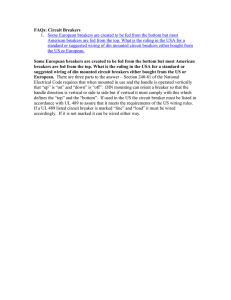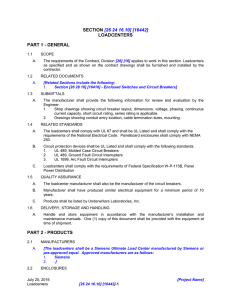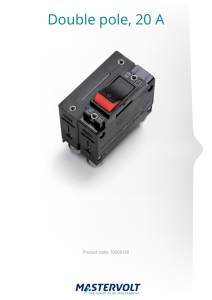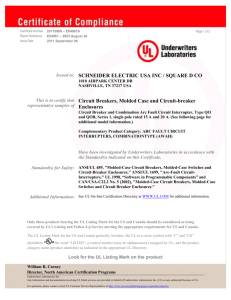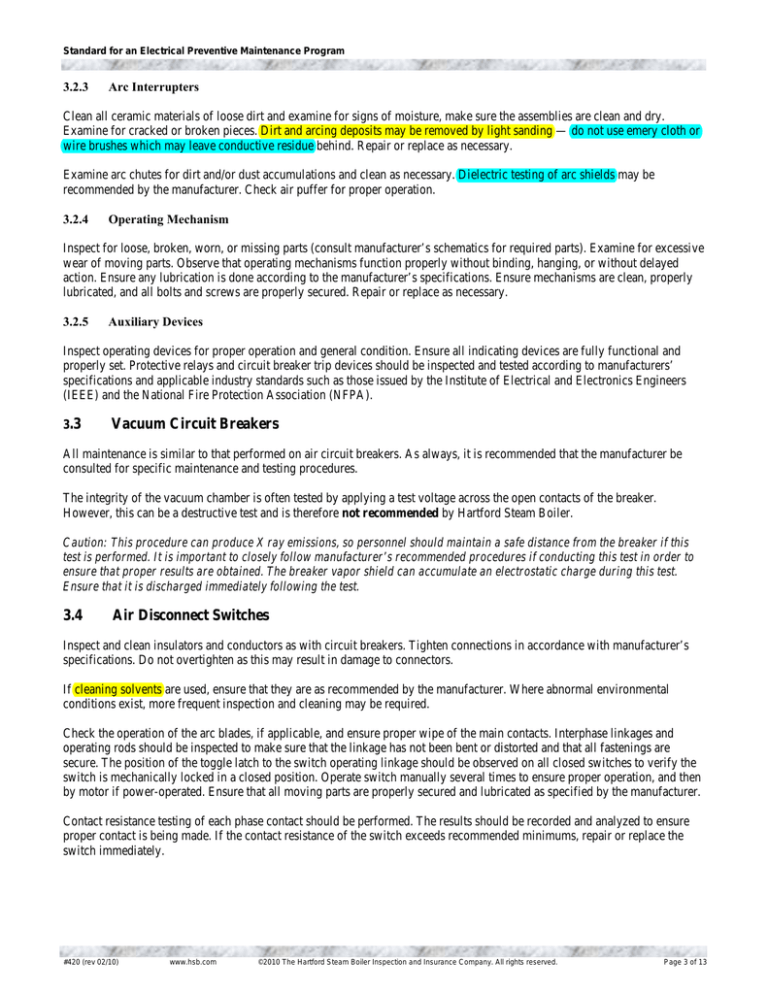
Standard for an Electrical Preventive Maintenance Program
$UF,QWHUUXSWHUV
Clean all ceramic materials of loose dirt and examine for signs of moisture, make sure the assemblies are clean and dry.
Examine for cracked or broken pieces. Dirt and arcing deposits may be removed by light sanding — do not use emery cloth or
wire brushes which may leave conductive residue behind. Repair or replace as necessary.
Examine arc chutes for dirt and/or dust accumulations and clean as necessary. Dielectric testing of arc shields may be
recommended by the manufacturer. Check air puffer for proper operation.
2SHUDWLQJ0HFKDQLVP
Inspect for loose, broken, worn, or missing parts (consult manufacturer’s schematics for required parts). Examine for excessive
wear of moving parts. Observe that operating mechanisms function properly without binding, hanging, or without delayed
action. Ensure any lubrication is done according to the manufacturer’s specifications. Ensure mechanisms are clean, properly
lubricated, and all bolts and screws are properly secured. Repair or replace as necessary.
$X[LOLDU\'HYLFHV
Inspect operating devices for proper operation and general condition. Ensure all indicating devices are fully functional and
properly set. Protective relays and circuit breaker trip devices should be inspected and tested according to manufacturers’
specifications and applicable industry standards such as those issued by the Institute of Electrical and Electronics Engineers
(IEEE) and the National Fire Protection Association (NFPA).
3.3
Vacuum Circuit Breakers
All maintenance is similar to that performed on air circuit breakers. As always, it is recommended that the manufacturer be
consulted for specific maintenance and testing procedures.
The integrity of the vacuum chamber is often tested by applying a test voltage across the open contacts of the breaker.
However, this can be a destructive test and is therefore not recommended by Hartford Steam Boiler.
Caution: This procedure can produce X ray emissions, so personnel should maintain a safe distance from the breaker if this
test is performed. It is important to closely follow manufacturer’s recommended procedures if conducting this test in order to
ensure that proper results are obtained. The breaker vapor shield can accumulate an electrostatic charge during this test.
Ensure that it is discharged immediately following the test.
3.4
Air Disconnect Switches
Inspect and clean insulators and conductors as with circuit breakers. Tighten connections in accordance with manufacturer’s
specifications. Do not overtighten as this may result in damage to connectors.
If cleaning solvents are used, ensure that they are as recommended by the manufacturer. Where abnormal environmental
conditions exist, more frequent inspection and cleaning may be required.
Check the operation of the arc blades, if applicable, and ensure proper wipe of the main contacts. Interphase linkages and
operating rods should be inspected to make sure that the linkage has not been bent or distorted and that all fastenings are
secure. The position of the toggle latch to the switch operating linkage should be observed on all closed switches to verify the
switch is mechanically locked in a closed position. Operate switch manually several times to ensure proper operation, and then
by motor if power-operated. Ensure that all moving parts are properly secured and lubricated as specified by the manufacturer.
Contact resistance testing of each phase contact should be performed. The results should be recorded and analyzed to ensure
proper contact is being made. If the contact resistance of the switch exceeds recommended minimums, repair or replace the
switch immediately.
#420 (rev 02/10)
www.hsb.com
©2010 The Hartford Steam Boiler Inspection and Insurance Company. All rights reserved.
Page 3 of 13
Standard for an Electrical Preventive Maintenance Program
3.5
3.5.1
Oil Circuit Breakers
External
Inspect the enclosure for signs of oil leakage. Clean external bushings assemblies and examine for signs of deterioration,
tracking, and loose or broken parts. Observe oil gauge to ensure device is operating properly and measuring the oil level
accurately.
3.5.2
Insulating Oil Test
Conduct a dielectric screen test of the insulating fluid. Based on the results of this test, filter or replace oil as required. Heavy
carbon content can indicate potential contact wear and should be investigated further.
3.5.3
Internal
Since the contacts for oil circuit breakers are not readily accessible for inspection, the contact resistance should be tested as a
minimum.
More extensive maintenance on the contacts might be require draining the oil and dropping the tank, and is therefore
performed less frequently. Follow manufacturer’s recommended schedule for examination of internal components such as
contact inspections. Open breaker and examine contacts for wear and/or excessive deterioration. Examine linkages for loose,
broken, or missing parts; repair or replace as necessary.
3.5.4
Auxiliary Devices
Operating mechanisms should be maintained as with air circuit breakers. Where applicable, examine oil level indicators, sight
glasses, oil lines, gaskets, and tank lifters for proper conditions. Repair or replace as necessary and in accordance with
manufacturer’s recommendations.
Examine arc-quenching assemblies for carbon deposits or other contaminates. Follow manufacturer’s recommendations for
cleaning.
3.6
Molded-Case Circuit Breakers
Molded-case circuit breakers should be kept clean for proper ventilation of the breakers. These types of breakers are usually
tripped by a thermal element that senses an increase in temperature due to excessive current draw. However, if dirt
accumulates on the surrounding of the breaker, the heat build-up may not be permitted to dissipate properly and result in
nuisance tripping.
Clean the breaker housing and inspect it for cracks or signs of overheating. Tighten all connections. Exercise the breaker
several times to ensure the mechanism has freedom of movement and to allow contact wiping.
In addition, larger duty circuit breakers (225 amps or above) should be electrically trip tested to ensure proper operation of the
trip elements and trip linkages. Refer to the latest edition of the National Electrical Manufacturer’s Association (NEMA)
Standard AB4, Procedures for Verifying Field Inspections and Performance Verification of Molded-Case Circuit Breakers. If
possible, test contact resistance to ensure quality of breaker contacts.
All molded-case circuit breaker panels should be cleaned of all dirt, dust, and debris using a vacuum.
3.7
Battery Stations / Chargers
3.7.1 Batteries
Thoroughly clean all battery surfaces of dust and/or dirt accumulations. Clean and tighten all terminal connections. Remove
any corrosion on battery terminals with bicarbonate of soda.
#420 (rev 02/10)
www.hsb.com
©2010 The Hartford Steam Boiler Inspection and Insurance Company. All rights reserved.
Page 4 of 13

